Planting pumpkin seedlings: when to plant and how to grow at home
As a rule, pumpkin, like cucumbers, is immediately planted in the ground. However, if you want to get an earlier harvest and / or decide to play it safe, because live in a fairly cool region with a short summer, then you can initially sow seeds for seedlings.
About when and how to properly plant a pumpkin for seedlings and grow at home - read further in the article.
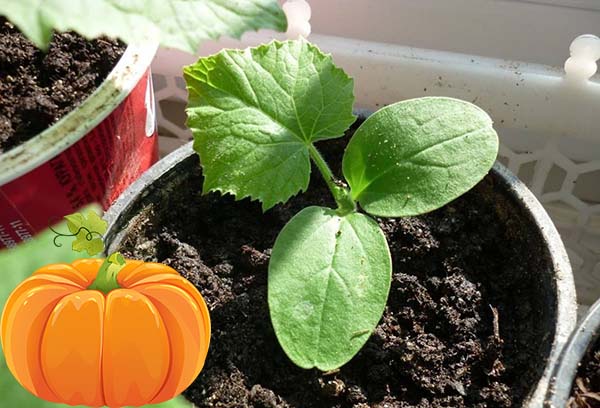
Content
Selection of the type and variety of pumpkin
When choosing pumpkin seeds, you should not pay attention to the picture on the package. The orange and smooth-looking fruit is not actually the best and necessarily sweet.
Advice! Don't choose the largest varieties.
This is due to the fact that the whole fruit at once is difficult to use somewhere, and after you cut it, there will be a problem with its storage... In addition, small pumpkin varieties are stored better and tend to have a sweeter taste.
In general, pumpkins are of the following types and varieties:
- large-fruited (Gribovskaya winter, Khutoryanka, Sweet pie);
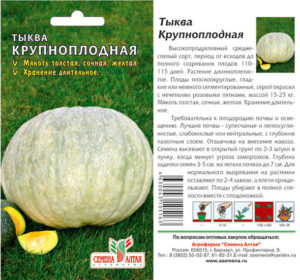
- firm or ordinary (Spaghetti, Kustovaya orange, Golosemyanka, Altai);
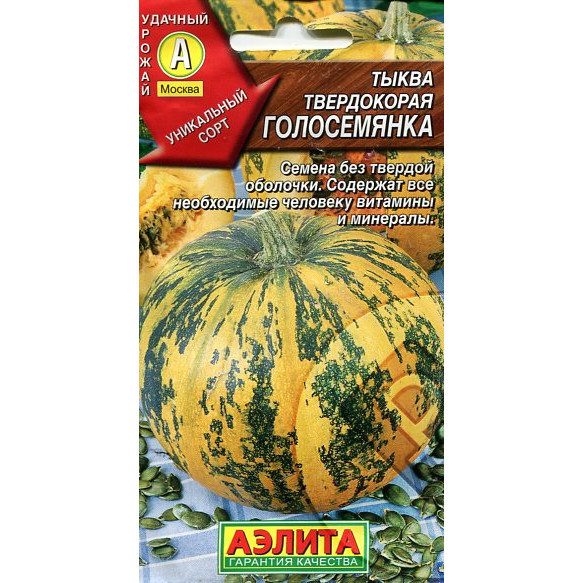
- nutmeg (Pearl, Guitar, Cello, Provencal).

The most delicious are muscat varieties, but they are the most thermophilic and late-ripening.
Hard varieties also have excellent taste. They have the earliest ripening period.
Large-fruited varieties are also very sweet and cold-resistant.
Pumpkin planting dates: when to plant seeds for seedlings and in open ground
Pumpkins should be planted for seedlings 20-30 days before the expected date of planting in open ground.
The optimal age of pumpkin seedlings for planting in the ground is 20-25 days from the moment of germination (5-10 days is a reserve for seed germination).
Accordingly, the optimal time for sowing pumpkin for seedlings is mid-late April or even early May, depending on the region of residence and its climatic zone.
Naturally, in the Middle zone (Moscow region) this can be done earlier than in the Urals or in Siberia, as well as in the North-West (in the Leningrad region).
In the South of Russia, they are usually planted immediately in the ground, but if you decide to grow seedlings first, then you can sow at the end of March.
According to the lunar calendar in 2020
If you are used to planting in accordance with the phases of the moon, then, according to the lunar calendar, in 2020 auspicious days for sowing pumpkin seedlings are:
- in March - 2-6, 12-14, 26-29;
- in April - 1, 2, 24, 25, 27-30;
- in May - 2-4, 6, 15-17, 20, 21 25-31;
- in June - 2-4, 11-14.

Unfavorable dates (the days of the Full Moon and New Moon, as well as the period when the Moon is in Aquarius, since this is a barren and dry sign -italicized), in which it is definitely not worth planting pumpkin (and any other crops) for seedlings in 2020, are:
- in March - 9,19-21, 24;
- in April - 8,15-17, 23;
- in May - 7,13-14, 22;
- in June - 5,9-11, 21.
According to the lunar calendar, from the magazine "1000 Tips for Summer Residents".
Preparing pumpkin seeds for planting
"Don't expect a good tribe from a bad seed."
Before planting, pumpkin seeds should be carefully selected (calibrated), throwing out all damaged and bent specimens, leaving only the most large and plump.
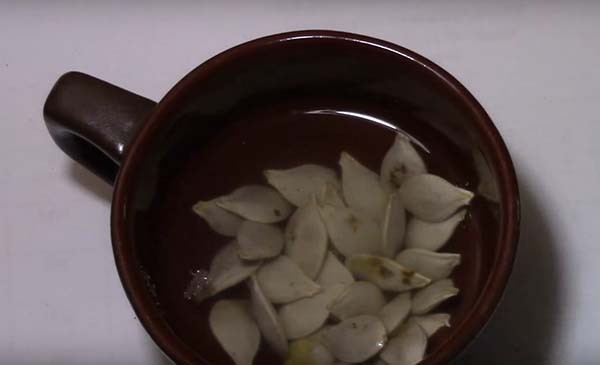
Next, the seeds should be checked for their suitability for sowing (viability): pour into a container with water for 3-4 hours. Seeds that drown can be planted, and those that remain floating on the surface are best thrown away (they are light and empty).
Video: checking pumpkin seeds for plant suitability
You can directly prepare and process pumpkin seeds in different ways:
- Soak in a damp cloth in ordinary hot water (50-55 degrees) for 1-2 hours.
And even better in one of the growth stimulants such as Epin or Zircon. You can also germinate in them.
- Disinfect by holding for about 20-30 minutes in a dark pink solution of potassium permanganate (1%, i.e. 1 mg per 1 liter of water), and even better in a solution Fitosporin (according to instructions)... At the end of the time, rinse under clean water and dry until the required flowability appears.
Advice! In addition to soaking, a hardening procedure can also be carried out. To do this, you need to wrap the seeds in damp gauze and refrigerate for 10-12 hours. Then take it out and put in a warm place for 10-12 hours. So repeat for 3-4 times (3-4 days), in other words, expose the seeds to temperature changes (stress), and then germinate.
- Simply germinate! To do this, first disinfect, then wrap it in a damp cloth (or put between cotton pads, napkins), put in a plastic bag (create a greenhouse effect) and put away for germination in a warm place where the temperature is + 24..28 degrees. As a rule, the seedlings will hatch after 2-4 days.
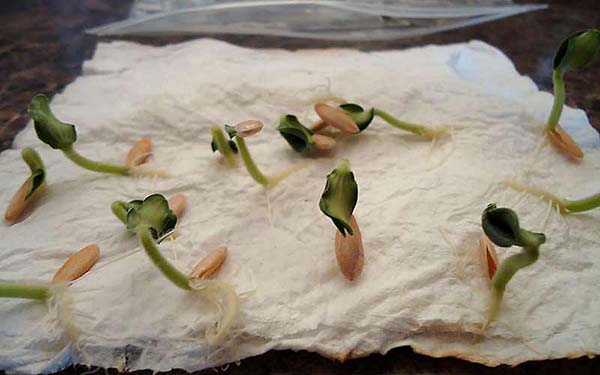
Another way to germinate pumpkin seeds is to sprouting in sawdust... To do this, you need to pour sawdust into a jar, pour boiling water over them and cover with a lid.Then wait a little (so that the temperature drops to room temperature) and add seeds to the sawdust jar. After that, place this jar in a plastic bag and put it in a warm and dark place until germination.
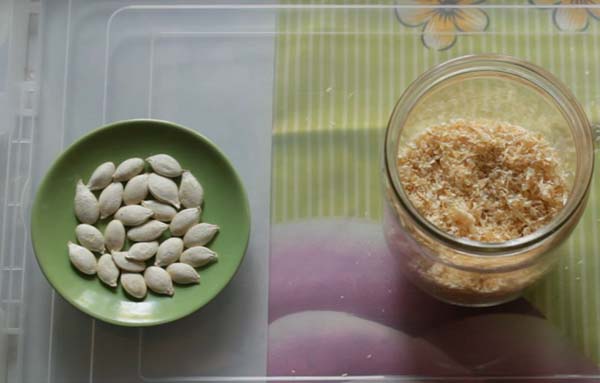
Video: sprouting pumpkin, watermelon and melon seeds
In order to awaken old pumpkin seeds, you can apply the method of temperature buildup. To do this, the seeds should be tied in cheesecloth and alternately dipped in hot water (40-50 degrees), then in cold (directly from the tap, although it is better to use thawed if there is still snow outside your window). This should be done 4-5 times, keeping in water for 5-6 seconds. After the procedure, dry and immediately sow on seedlings or in open ground.
Many summer residents successfully plant pumpkin and dry seeds, but in this case, the planting time should be shifted by 5-7 days, in other words, it is necessary to plant earlier.
Important! If you purchased pelleted (processed) seeds, then they do not need any pre-sowing preparation, they should be sown dry.
How to plant pumpkin seedlings
So, you have decided on the timing, prepared and processed the seeds. Well, it's time to plant pumpkin seedlings! However, first you need to select suitable planting containers, soil to fill them and actually land them at the required depth.
Planting tanks and soil
Containers for planting and growing pumpkin seedlings should be individual: pumpkin does not tolerate picks, so special peat cups, ordinary disposable plastic (0.5 liter), plastic pots or any other containers convenient for you, from which there will be it is easy to get seedlings when planting in a garden. Moreover, their diameter should be at least 8-10 cm.
Alternative opinion! Many gardeners perfectly grow pumpkin seedlings in small, 0.2 liter cups. Naturally, it is recommended to plant earlier, when the first one is only forming in the seedlings, and the second true leaf begins to appear.
Pumpkin loves nutritious soil. You can prepare the soil mixture yourself or buy ready-made soil for pumpkin crops (cucumbers, melons, watermelons).
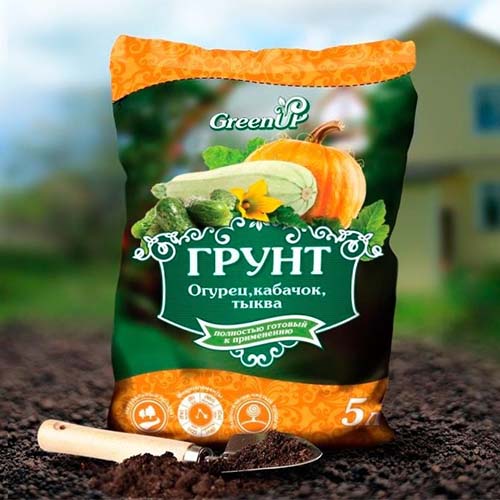
If you decide to make it yourself, you can mix peat, humus and sand in a 2: 1: 1 ratio, or take peat, humus and rotted sawdust in equal parts.
Direct planting for seedlings
Step-by-step instructions for sowing pumpkin seeds for seedlings:
- Prepare planting containers and fill them with soil a little more than half (or 2/3), so that as you grow, you can add soil to the seedlings.
- Spill liberally.
- Sow seeds to a depth of 2-4 centimeters.
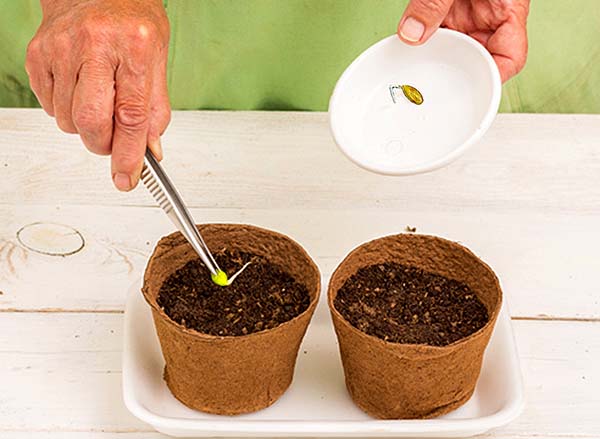
- Cover the container with plastic wrap or glass (to create a greenhouse effect).
- Put in a warm and dark place, where the air temperature is within + 20-26 degrees.
Video: planting pumpkin seedlings with germinated seeds
Video: sowing dry seeds for seedlings
How to care for pumpkin seedlings at home
When the first shoots appear (after 3-7 days), the shelter must be promptly removed.
And before that, it is worth at least 1 time a day to open the containers for airing for 10-15 minutes and at the same time check them for seedlings.
After germination, it would be good to put the container with plantings in a cooler place (where the temperature is 2-5 degrees lower, i.e. about + 15-18 during the day and + 13-15 at night), and then (after 5-7 days) return to the previous temperature conditions (+ 20-25 in the daytime, not lower than +15 at night).
Such a procedure (lowering the temperature) will help young seedlings not stretch out.
Lighting
Pumpkin seedlings need good lighting for normal growth, so the containers should be placed on a brightly lit windowsill, ideally on the south (southeast or southwest).
Full 12 hour daylight hours - your reliable protection against pulling out seedlings.
Advice! If suddenly the seedlings begin to stretch out, then be sure to pour some earth into the cups.
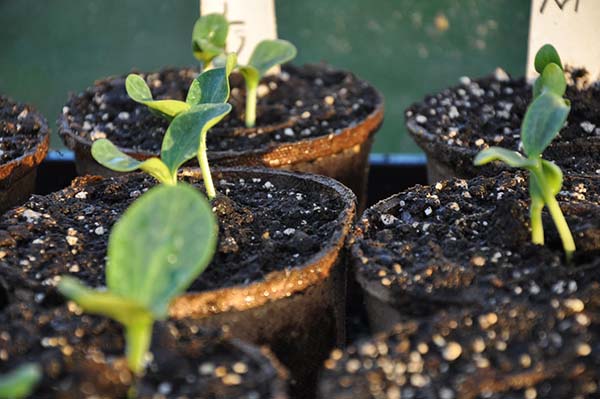
Watering and feeding
Pumpkin loves moisture, so it needs regular watering. However, it should be done in moderation without overflowing the plant. At the same time, excessive drying of the soil should also not be allowed.
The water should be warm (at least room temperature), settled or filtered.
After 1-1.5 weeks as shoots appear, pumpkin seedlings can be fed for better growth (however, if you originally used fertile soil, then no additional feeding is needed). Alternatively, you can use nitrogen fertilizer (for example, mullein or similar), or even better, a full complex type of nitroammofoska or some kind of special for pumpkin (the same Agricola).
Video: pumpkin seedling growth in a week
When and how to plant pumpkin seedlings in open ground
The signal for planting pumpkin seedlings in open ground is the appearance of sufficiently developed 2-3 true leaves and the achievement of a seedling height of 15-20 centimeters.
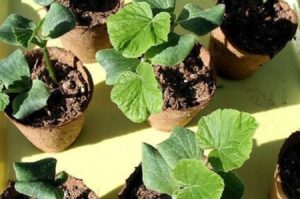
As for the timing of disembarkation, by this time the earth should warm up enough (up to + 8-12 degrees), and the weather should be stable warm (above +10 degrees).
Like all pumpkin, pumpkin does not tolerate frost, but it can tolerate short-term (unlike other melons).
Depending on climatic conditions, as a rule, a favorable period occurs in the second half of April in the southern regions, in mid-May - in the Central zone (Moscow region), at the end of May - in the Urals and Siberia.
Advice! It will be very prudent if you harden your plants 5-7 days before planting the seedlings on the garden bed, namely, you begin to take them out to the balcony (or loggia) or to the greenhouse, gradually increasing the residence time from 1-2 hours to a whole day.
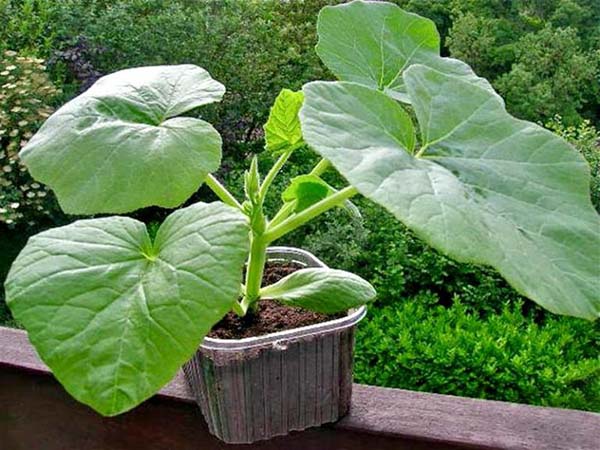
It is optimal to plant a pumpkin in the garden in the evening or during the day, in cloudy weather, when the sun has gone or hid behind the clouds.
Pumpkin seedlings are planted according to a certain scheme, as a rule, it is indicated on the seed package (most often at a distance of 80 to 150 cm from each other).
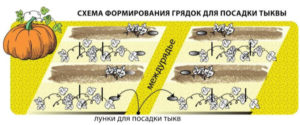
The place to grow the pumpkin should be the sunniest.
Transplanting into the ground should be done carefully, slowly taking out the seedlings along with the lump, and in no case damaging the root system of the plant. It is better to make the hole large enough: pour a mixture of humus and ash on the bottom, spill it with warm water, put a seedling, and then cover it with garden soil. As soon as the landing is carried out, the planting can be mulched with humus.
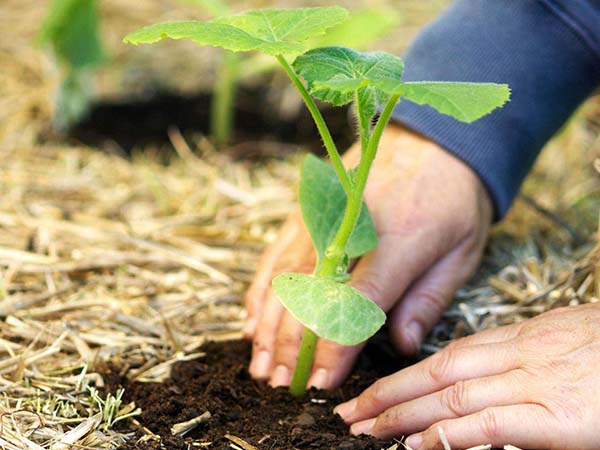
Video: planting pumpkin seedlings in open ground
Thus, even a novice gardener can grow pumpkin seedlings at home. The main thing is to initially choose a good variety, determine the timing, prepare the seeds and plant them correctly.

